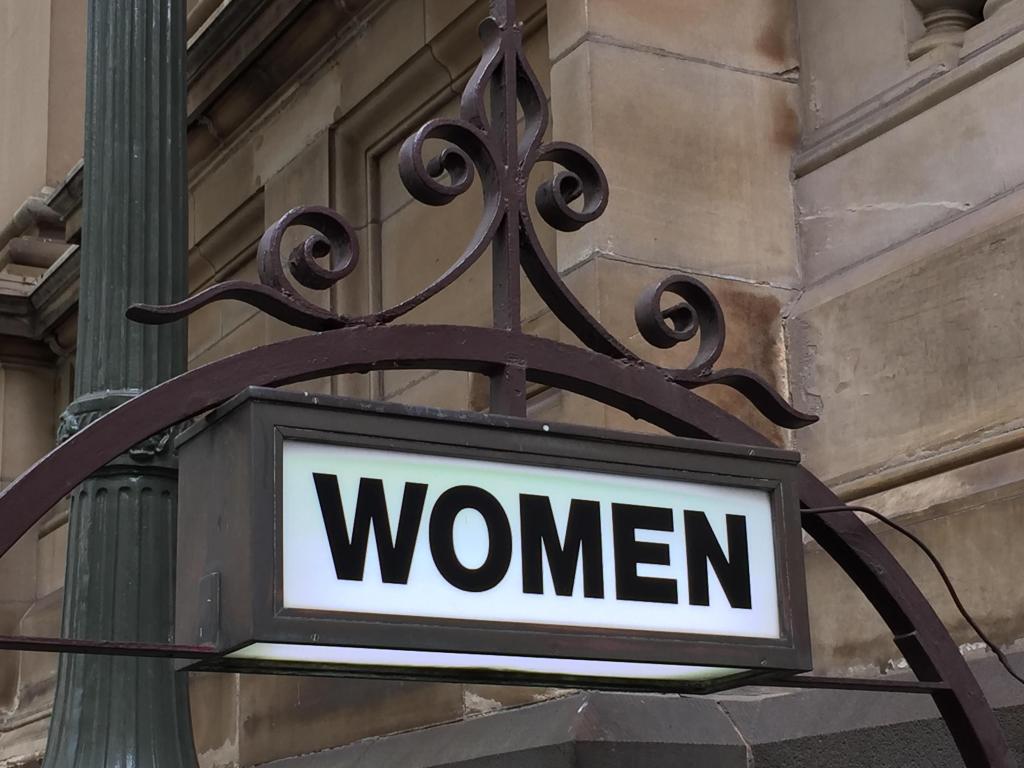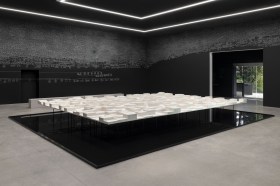Photo Gina Fairley, ArtsHub
On 4 September 1970 the cover of LIFE magazine was emblazoned with the headline, ‘Women Arise: The revolution that will affect everybody’. It came two years after the Women’s Liberation Movement protested on the 1968 Miss America Pageant – who viewed themselves as second-wave feminists following the footsteps of the suffragists. And yet, there is no monument on the Atlantic City Boardwalk to commemorate that protest; rather the cultural touchstone of that moment is a trite label of feminists as “bra-burners”.
Nearly fifty years on – yes 50! – we have women’s directors programs, women’s writing prizes, exhibitions dedicated to art by women and women’s film festivals.
So on this International Women’s Day we ask, isn’t it time to stop calling ourselves women artists? Rather than drawing attention to the label to put women in the spotlight, one might argue that we have come so far in that fight that today the label is no longer required – indeed that our fight may be for its removal.
Women who happen to be artists should be recognised for that primarily – for their creative and professional identity – rather than one based on gender. And yet, more than ever museums and galleries are programming women only exhibitions in a laudable attempt to rebalance the scales of history.
To label or not to label?
Photographer and film maker Merilyn Fairskye points out that the label ‘woman artist’ says very little about her work.
‘I neither embrace nor avoid the description “woman artist”. I think it’s difficult to generalise about being a “woman” artist because of the vastly different practices and life experiences of women who are artists.’
Fairskye is sceptical about the label which she said ‘can put women who are artists in a box and keep them there. Sometimes I think it can be patronising.’
Kelly Doley – artist, arts worker and Co-Director of the performance collective, Barbara Cleveland – believes there are times when the label “woman artist” is meaningful, but other times when it is limiting.
‘For me, as a cis woman it is more important to outline the political framework or messaging that my works are concerned with than just my gender. For some artists identifying gender positions as cis male/female or trans male/female is a key component to their works’ meaning so clarifying and owning a gender position is super important.
‘If the work has no engagement with gender politics but the artist is framed solely with gender framing it can be limiting. I want to highlight that “women” as a gender category is multi-faceted,’ said Doley.
Artist Elvis Richardson said that being a woman was an important part of the artist she is. ‘But in the art media etc, what you have when the term is used is it sets the work or artist as apart or other. As long as we refer to artists by the gender first why not apply that across the board – The Museum of Men’s Art?’
Bolstering visibility or diminishing equality?
Helen Molesworth, chief curator of the Museum of Contemporary Art, Los Angeles recently rehung the museum’s permanent collection to redress various inequalities, including gender and race. Like many arts managers, she has become increasingly aware of the balance of men and women she is displaying.
‘The only way you get diversity is to actually do it. That means some of the dudes don’t get shows.’
To keep check on those numbers has become a kind of annual gender ledger for curators, producers, theatre companies and art museums globally. Richardson has done important work on this data through her The Countess Report.
She told ArtsHub: ‘I think it does increase the profile (of women artists) – most people aren’t thinking about gender when they go to a museum or gallery – but The Countess blog showed that when your attention was drawn to the gender equity of the art we get to see how a viewer might start to question why are women not getting the same opportunities as men.’
She continued: ‘I think all artists struggle with confidence, you really have to believe in yourself to put yourself out there like artists do. The best feedback I have had on The Countess blog is from women artists who found it shed a light on their struggle for recognition – due in a large part to the systematic and unconscious gender bias that The Countess numbers prove … and when those artists are more often men – women notice – we are counting.’
Simply, there is little tolerance for gender ignorance today. What is interesting, rather, is not the glaring omissions but rather the tone chosen in how those artists are presented and programmed.
American writer Sarah Boxer observes that marketing artists by gender has become overheated. On seeing the Denver Art Museum’s June 2016 landmark exhibition, Women of Abstract Expressionism, she commented: ‘Approaching the Denver Art Museum, I could see the banners announcing the women’s exhibition from a distance. WOMEN WOMEN WOMEN. It almost looked like they were announcing a striptease. As I got closer, I could read the fine print: women of abstract expressionism.’
Does that kind of marketing bolster visibility or diminish equality? It turns out that the old adage that ‘sex sells’ also works for gender. In today’s art world there is no mistaking that gender sells – and sells big.
Doley believes there is a place for women artists to be given dedicated spaces but only as part of a larger framework.
‘A showcase exhibition of amazing female artists does not work against equality, such as Contemporary Australia: Women at GOMA (Gallery of Modern Art, Brisbane). However this just can’t be the only frame to view and understand women artists work.
‘To achieve equality and change the landscape there needs to be both inclusion of women into major shows and collections as well as moments of celebration that highlight the incredible contribution women have made to art movements historically and contemporaneously,’ she said.
Fairskye is less convinced of the value of a show framed and marketed around the gender of the artists. ‘So what if all the artists in an exhibition are women ? It’s not noteworthy unless you’re talking about countries or cultures where women’s participation is prohibited or severely constrained. But I’m all for affirmative action, as it’s necessary to open out sites of privilege and let excluded others share in opportunities. I just wouldn’t be making a song and dance about it, better to just get on with it.’
An era for women artists
American feminist art historian, Linda Nochlin, asked in her now infamous 1971 article in ARTnews: ‘Why Have There Been No Great Women Artists?’ She wrote:
‘The fact, dear sisters, is that there are no women equivalents for Michelangelo or Rembrandt, Delacroix or Cézanne, Picasso or Matisse, or even, in very recent times, for de Kooning or Warhol.
‘The fault, dear brothers, lies not in our stars, our hormones, our menstrual cycles or our empty internal spaces, but in our institutions and our education … everything that happens to us from the moment we enter this world of meaningful symbols, signs and signals … is bound up with manliness.’
Nearly half a century has passed since Nochlin posed her question, and we are still checking in on the need for such categorisation and gender spotlighting. Have we tracked forward, and is our new era one for women on her own terms as a professional artist?
Doley said: ‘It is not that the art world is male dominated – it is that the small number of power positions continue to be dominated by white men.’
‘Generally speaking women are the majority of arts workers in arts organisations and departments and are the highest percentage of graduates at art school. However there continues to be fewer women in leadership positions as men, continue to be women receiving lower wages and receive smaller prices for their works in the art market.’
Fairskye added that she did not think there was a singular art world any more and that ‘female arts professionals don’t automatically support artists who are women’.
‘Insofar as the world itself is clearly male dominated …This is not to say that the work of women artists isn’t recognised and celebrated within a traditional arts economy that has increasing numbers of female curators, art academics, administrators, philanthropists, gallerists – but not to the same degree and with the consistency, longevity and financial rewards as their male counterparts.’
Clearly we still have more work to do.
Doley concluded: ‘To gain and regain strength, my advice to creative women who are politically inclined is to surround yourself with like-minded people, always be up for conversation with people that disagree with you but don’t be willing to compromise your voice and your story.’





